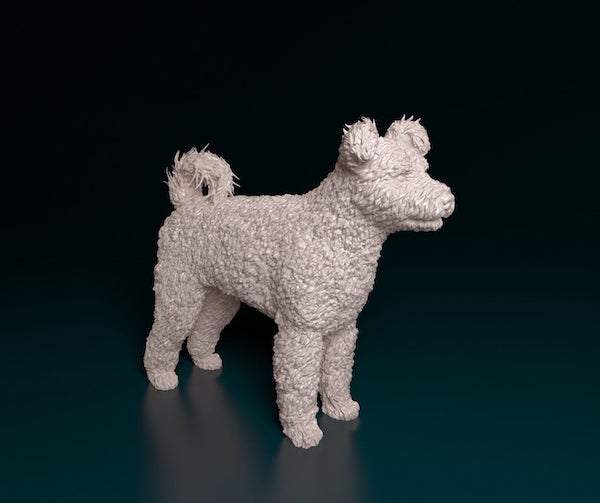
Though spitz-type dogs are generally associated with nordic breeds, there are a number of herding breeds that are also regarded as spitz-like, the Icelandic Sheepdog, Norwegian Buhund, and Lapponian Herder among them. We’ve not been able to trace the aforementioned breeds back to an indigenous herding dog known as the Pomeranian herding dog (or Hütespitz), but there is one other herding breed we know to be a descendant of the Hütespitz, and we’ll get to that a bit further down in the post.
In 1933, the Hütespitz was listed in the “Lexikon der Hundefreunde” (Encyclopedia of the Dog Friend) by cynologist, Heinrich Zimmermann. He referred to it as one of the three types of “down-to-earth herding dogs,” the term, Pomeranian herding dog or Schafpudel (Pomeranian being one of the first names for the Spitz) used in later publications to describe a white, prick eared dog with herding abilities. We’ve also seen herding Spitz as a translation for the Hütespitz, but by either name, these dogs were known since the Middle Ages; they were considered extinct as of 1935.
Nearly fifteen years before, Emil Raitsits, a Hungarian veterinarian and professor, had created the breed standard for the Pumi which was approved by the FCI in 1935. It’s believed that early contributors to the creation of the Pumi was the Pomeranian Schafpudel and the Hütespitz (or their progeny) mixed with ancestral Pulik some 300 years ago. Some experts believe the Pumi may have begun to appear in the 1600’s, but it certainly did in the 1700’s.
If you note that Hütespitz appears to be a German word, know that for several centuries, a newly formed Austro-Hungarian Empire slowly reclaimed Hungary which opened the country up to the rest of Europe more than ever before. Hungarian farmers could bring in working dogs from other parts of Europe, and most of them likely came from German-speaking countries. The Pumi’s name (first seen written in 1801) is believed to reflect the origin of those German genetic contributors.
The Pumi is a herding specialist who employs an upright, close-working style aided and abetted by bouncing and barking for intractable sheep, but have you seen a Pumi at work on an agility course? Enjoy the clip below!
Image: 3D Printed Pumi Dog Statue created by Süleyman Aydın/TTPrinting is available for purchase here

The Hütespitz went officially extinct in 1936, as the purebred breeding stock, by the Nazi government’s orders, were used to create the White German Shepherd, as a government project.
The Schafpudel, which is known since the Middle Ages is another herding dog of water dog ancestry. In past centuries, before purebred registries, in German, the general name for all the water dogs was Pudel. Interestingly, in old Hungarian sources there is mention of the descendants of the Western European water dog type herding dogs which came into Hungary with Merino flocks being imported from the Pyrenean region (Spanish Water dogs and Schafpudel) and the ancestral Puli were called for a short time Hungarian Water Dogs. Pyrenean Shepherd and Hütespitz type dogs also came in to Hungary with flocks of Merino. There are records of contracts with shepherds who brought these Merino flocks into Hungary, to stay at the big estates which imported them for a season or two, to teach the Hungarian shepherds – who were only familiar with the native Hungarian sheep breeds – how to take care of the Merino sheep.